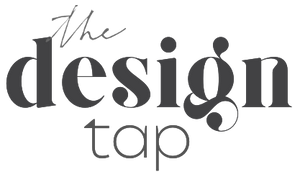The Main Elements of Mid-Century Modern Style
In a world that’s oftentimes off-the-walls erratic and mystifying, it’s liberating to come home to a space that radiates pure unambiguity. How can you achieve this innate feeling of calm within your own design scene? A must-do is a covetable style choice that reflects smooth, enduring tradition—mid-century modern. Mid-century modern is the trendy design that never seems to lose its traction on the highway of desirability.
Mid-century modern style has been a steady pillar of modern interior spaces for decades, remaining a stand-out style with various interpretations that adequately suit our contemporary time. The deep roots of this forever-chic movement span back to the decades of roughly the mid-1940s to the 1970s, with a clean, aesthetic look that has only metamorphized greatly since.
If you have questions about this style that are tangled up in your mind or stuck to the roof of your mouth, we’re here to help unravel the details of mid-century modern spaces. Let’s parse the main elements of mid-century modern style together to create a distinctive, less buttoned-up version for your modern living spaces.
Mid-Century Modern: Back To the Future
What remains unique about mid-century modern is how it looks to the future, traces back to the past, and yet lives entirely in the present. If you think about common design elements within modern homes today, you may be surprised how many of them go back in time to this specified movement. To understand the ceaseless resonance of mid-century modern, we must also travel back to the distant past to examine its rooted history and surrounding context.
We can pinpoint this style’s humble beginnings to the time after World War II—a time when countries around the globe began to focus on restoration, reconfiguration, reestablishment, and modernization. Mid-century modern was born out of this period of change, with basic designs that utilized fresh means, technological methods, and interior materials to reimagine traditional, original pieces of the past.
The identifiable term “mid-century modern” did not appear until the 1980s, as the stylistic era is a beloved mishmash of varied values of past decades, such as post-war functionalism, the rose-colored glasses of the 1950s, the candidness of the 1960s, and the textured tones and vibes of the 1970s. Mid-century modern remains to be an intrinsic shifting and shaping of consciousness, offering an affordable style that is utterly functional yet modishly futuristic. There is truly nothing mundane about its elemental appeal to modern or mainstream consumers.
A Vast Color Palette
Out of the assortment of the main elements of mid-century modern style to know, color is a wonderful starting point. To the core, the style of mid-century modern is unpretentious, yet spontaneously bold. Its vast color palette offers wide room for flexibility based on one’s preferences or shade choices. The neutrals of black and white never go out of style, shown through other popular minimalist interior design trends; but a mid-century modern touch utilizes neutrals with splashes of muted, bright colors. For a stronger presence or allure, you can consider incorporating smart, vibrant hues or softer pastels. Orange and brown are a classic duo for a mid-century mood, while cooler-toned chartreuse and gray is a cheery, chic counterpart to pull a room together.
The Juxtaposition of Design Elements and Materials
Incorporating rhythm into a room requires juxtaposition that draws and averts one’s gaze. The juxtaposition of lines, shapes, forms, colors, and textures is a remarkable contrast appealing to quality design aesthetics. The idea is not to draw clutter and chaos from juxtaposing unlike things but to create clear-cut contrast of harmonious marriage with timely contradictions. Such juxtaposition softens the harder appearances within a room.
For instance, if some random object were to fall from the sky with a clatter, you could still create unity and diversity within a room by incorporating that object. Clean lines can juxtapose shapely curves, sleek chair legs can juxtapose chunky tabletops, and various accessories or furniture pieces made of contrasting materials can juxtapose one another.
While the element of corresponding contrast is a continual challenge of design, this coexistence remains fundamental to the beating heart of the current mid-century modern style. The allowance for flexible freedom and varied quirks culminates into a charming design that’s fairly easy on the eye.
Geometric Shapes and Curvy Lighting
Mid-century modern style plays with abstract, asymmetrical, and geometric shapes or feminine curves alongside organic shapes and sleek lines. Oftentimes, this use of diverse design is found within lighting fixtures. Overtly linear loops, geometric pendants, silver spheres, upscale glass chandeliers, or wood curved floor lamps offer a playful sense of design.
These quirky pieces may feel unexpected in a living space, but appear intriguingly connected when all is said and done. Sleek décor offers structure and elegance within your living spaces for varying levels of depth and nuance. Even the smallest spaces within your home can be brought to life with authentic styling—a style that’s futuristic and nostalgic alike.
Simple, Functional Furniture Forms
Modern furnishings tend to call for a more straight-edged design, while mid-century modern incorporates shapely silhouettes and clean corners for maximum function and minimal fuss. Since mid-century modern focuses on austere function over form, furniture forms within a room should break up straight edges and not be fancily adorned or upholstered. Rather, these pieces create an individualistic, purpose-built space with their functionality.
When leaning towards a mid-century modern style, you can utilize boomerang-shaped furnishings, more rounded tables, or asymmetric sofas that are easy to spot, store, or curl up in. A few key pieces of focal-point furniture can truly define a space and set the aesthetic vibe for the rest of the room. Mid-century furniture functions extremely well within a diverse range of homes or apartments because of the simplicity and quality of its craftsmanship.
Shop DesignTap for a unique assortment of mid-century modern sofas and sectionals. From velvet sofas that marry form and function perfectly to iconic linen chaise lounges with sleek bases, our selection of lounging furniture offers a wide range of forms and compositions. We source our luxury furnishings with care to supply our customers with unexpected treasures that provide impactful looks. Explore through our curated collection full of handcrafted curves, rich textures and colors, and sophisticated shapes for a classic and eye-catching style you’re sure to love.




Leave a comment